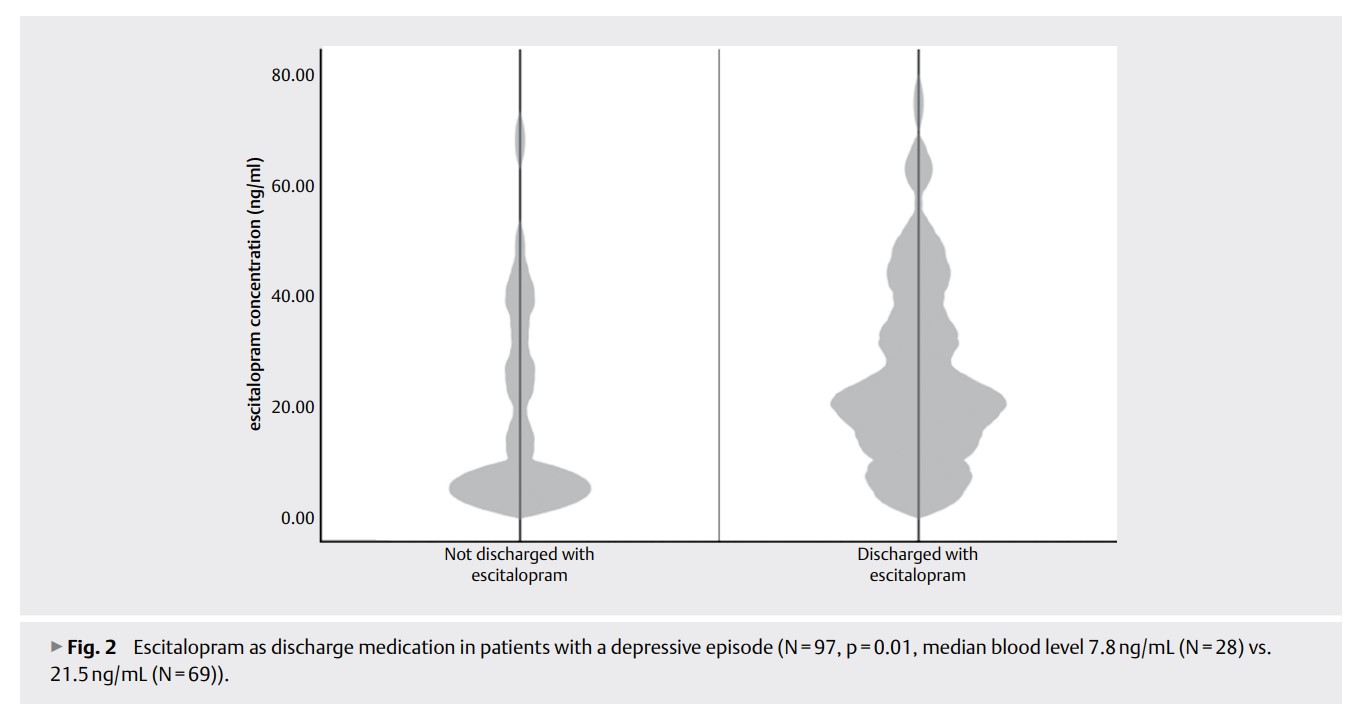
Issue 02 · Volume 56 · March 2023
AGNP工作组于2018年在本刊发表的《神经精神药理学治疗药物监测(TDM)共识指南》的最新更新,建议对选择性5-羟色胺再摄取抑制剂艾司西酞普兰和其他抗抑郁药的剂量滴定进行血液水平监测。这一建议是基于这样的假设:较高的艾司西酞普兰浓度将导致较高的反应概率。然而,描述艾司西酞普兰的抗抑郁疗效与药物暴露之间关系的数据有限,剂量反应荟萃分析报告的结果相互矛盾,但总的来说,不支持SSRIs的高剂量范围。考虑药物暴露(即血液浓度)的荟萃分析还不能发现SSRIs有明确的药物暴露-反应关系。
在这种情况下,阅读Hart等人最近的研究是有临床意义的,该研究旨在利用TDM数据库的回顾性评估数据,研究艾司西酞普兰的治疗效果和药代动力学对血药浓度的影响。该研究收集了134名使用艾司西酞普兰进行纵向治疗的患者的数据,这些患者被要求用TDM来指导药物治疗。这项分析的主要结果是,与继续接受艾司西酞普兰治疗的患者相比,接受艾司西酞普兰治疗并在住院期间停止治疗的抑郁症患者的血清浓度较低(见下图),两组患者的浓度相差15纳克/毫升。关于更多的结果,例如用药对结果的影响,以及作者的解释,欢迎阅读本期精选论文。同时欢迎阅读本期其它全部论文。
Original Paper
Xenia M. Hart, Friederike Amann, Jonas Brand, Luzie Eichentopf,
Gerhard Gründer
Cross sectional therapeutic drug monitoring (TDM) data mining introduces new opportunities for the investigation of medication treatment effects to find optimal therapeutic windows. Medication discontinuation has been proven useful as an objective surrogate marker to assess treatment failure. This study aimed to investigate the treatment effects of escitalopram and pharmacokinetic influences on blood levels using retrospectively assessed data from a TDM database.

